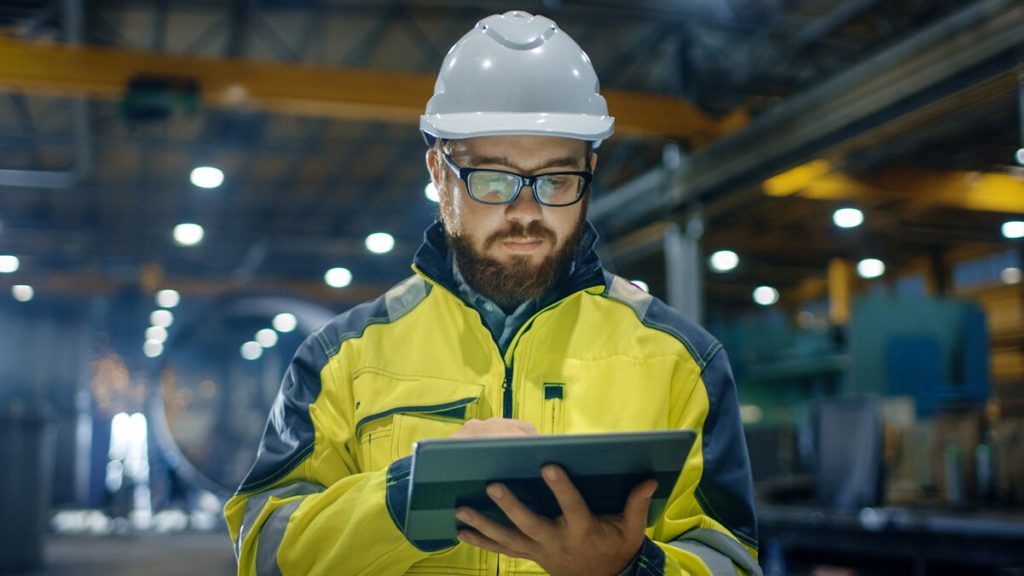Caught-in or caught-between hazards are among the leading causes of workplace injuries and fatalities, as categorized by the Occupational Safety and Health Administration (OSHA).
FREE CONSULTATION

30 YEARS EXPERIENCE
OVER $100 MILLION COLLECTED
ONLY WORK COMP
This is the lawyer you want to hire! Just read the reviews. It is all true. Incredible! He will get you every dollar of lost wages, get you every ounce of medical treatment, and get you the highest possible award from the Division of Workers Compensation.
These reviews are correct. This attorney is incredible. He knows workmans compensation, fights for denied treatment and wages, and gets your on the job injury rated by the best doctors. I will be using him from here on our great experience.
The Law Office of James M Hoffmann was referred to me from a previous client, that was extremely impressed, with his service and outcome.
I met with Jim Hoffmann to discuss a car accident. Three cars were involved, my car was totaled, and I was seriously injured. After meeting with Jim the very first time, I immediately felt comfortable, and knew that he would have my back, and would fight for me.
Throughout my journey, I dealt with a lot of pain and several issues that lasted for years. During this time I had to contact Jim and Jamie (Jim’s wonderful assistant) many times. Every time I sent an email with questions, I received feedback extremely quickly!
I feel Jim negotiated a great settlement for me!
The Law Office of James Hoffman will be the first place I contact if I ever need his help again!
Suzanne Charles
Compensation? Get this lawyer. Simply better than all the rest.
Operating machinery is routine in many industries, particularly manufacturing and construction. However, working with machinery can present significant risks, specifically the danger of caught-in or caught-between hazards. These incidents occur when a worker becomes ensnared by machinery or compressed between parts of the equipment or between the equipment and a stationary object.
Understanding Caught-In and Caught-Between Hazards
Caught-in or caught-between hazards are among the leading causes of workplace injuries and fatalities, as categorized by the Occupational Safety and Health Administration (OSHA). These hazards commonly occur when:
- Machinery is improperly guarded: Moving parts of machinery can catch clothing or body parts if protective guards are missing or inadequate.
- Equipment is not de-energized during maintenance: Unexpected startups can trap workers who are repairing or maintaining machinery.
- Space around machinery is insufficient: Tight spaces increase the risk of a worker being pinned between machinery and a fixed object.
Preventative Measures for Workplace Safety
To prevent these types of accidents, employers must implement stringent safety protocols, including:
- Machine Guarding: Ensuring all machinery is equipped with appropriate guards that prevent access to moving parts.
- Lockout/Tagout Procedures: Applying proper lockout/tagout practices to secure machinery from unexpected startups during repair or maintenance.
- Training and Awareness: Conducting regular training sessions to increase worker awareness about the risks and the importance of following safety procedures.
Legal Protection for Workers
Despite preventive efforts, accidents can still happen. Workers who suffer injuries due to caught-in or caught-between hazards have the right to seek compensation for their injuries, lost wages, and other damages.
Frequently Asked Questions About Caught-In or Caught-Between Hazards
What types of objects can contribute to caught-in or caught-between hazards?
Caught-in or caught-between hazards can be caused by various types of objects, including machinery, equipment, or even materials being handled at a worksite. It’s crucial to recognize the specific hazards associated with different types of machinery and materials to ensure appropriate safety measures are in place.
Who is responsible for keeping workers safe from caught-in or caught-between hazards?
The responsibility for worker safety is shared. Employers are required to provide a safe work environment, which includes proper training, safety equipment, and adherence to safety protocols. Workers, on the other hand, are responsible for following the safety training, using the equipment properly, and reporting any unsafe conditions.
When is working with machinery a common cause for caught-in or caught-between accidents?
Working with machinery becomes a common cause of such accidents, particularly when safety guards are missing or disabled and proper lockout/tagout procedures are not followed. Maintenance, cleaning, or working too close to moving parts without adequate protection can also lead to accidents.
Which scenarios would be considered a caught-in or caught-between hazard?
Scenarios such as getting hands or clothes caught in moving parts of machinery, being pinned between equipment and a fixed structure, or being trapped in a trench collapse are all considered caught-in or caught-between hazards.
What should you do to avoid caught-in or caught-between hazards?
To avoid such hazards, always use machinery and equipment as instructed, ensuring all safety devices are in place and functioning. Follow lockout/tagout procedures before performing maintenance. Stay clear of moving equipment and ensure you’re wearing appropriate personal protective equipment (PPE).
Speak With a Workers’ Compensation Lawyer
If you or someone you know has been involved in a caught-in or caught-between accident while working with machinery, it is crucial to understand your rights and the benefits you may be entitled to receive. Contact a St. Louis workers compensation lawyer at the Law Office of James M. Hoffmann for experienced legal guidance. Our dedicated team can help you navigate the complexities of workers’ compensation claims to ensure you get the compensation you deserve. Call us today at (314) 361-4300 or fill out our online Contact Form to schedule a consultation.

